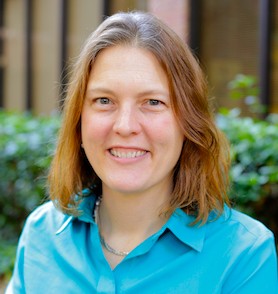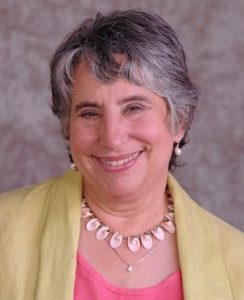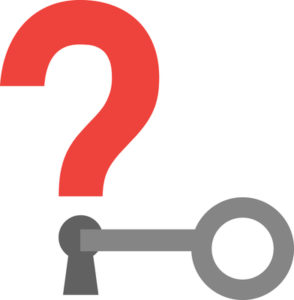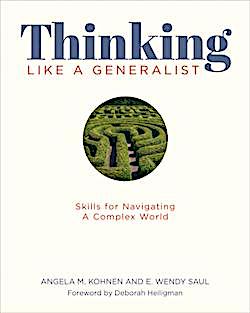Helping Our Students Identify as Generalists
Information literacy isn’t just about fact-checking skills and digging for information.
By Angela M. Kohnen and E. Wendy Saul

Angela
It’s no surprise that information literacy is on teachers’ minds these days. As each new piece of information, misinformation, or disinformation dominates news headlines, teachers ask where and how to begin to address the challenge of helping young people make sense of their world.

Wendy
The technologies are confusing and constantly changing, the curriculum is already too crowded with other priorities, and the headline topics are often hot button issues that present landmines for classroom discussion. Let’s talk frankly about this problem.
Many media literacy initiatives start with skills, instantiated into checklists and acronyms to help students apply these skills. In some cases, these checklists or skillsets may even work—at least until the spreaders of disinformation catch up—but we argue here that they begin from a shaky premise: that people are fooled by bad information primarily because they don’t know how to find good information, or they don’t understand how to fact check properly.
This may be the case in some instances—sometimes all of us are genuinely misled because we couldn’t find better information. But, in our experience, it is far more common that people believe bad information not because they can’t fact check, but because they don’t want to.
Why we might accept faulty information
The misinformation and disinformation that people believe (or spread without believing) often speaks to something other than logic or rational thought. This bad information often resonates deeply with their sense of who they are, with their identities. And it’s very hard to believe something is true if the truth will shatter our sense of self or reflect negatively on something we love.
To take a non-controversial example, Angela is an avid sports fan, particularly loyal to the St. Louis Cardinals baseball team. As a native St. Louisan, her Cardinals fandom is interwoven with warm memories of childhood. And being a fan plays a role in her friendships, her marriage, her hobbies, her travel, her discretionary spending, even her wardrobe.
So when good information comes out about the Cardinals or their players, she finds herself quick to believe it and share it—and when bad information comes out about the team’s arch-rival Chicago Cubs, she’s happy to forward it along.
Sometimes these stories end up being inaccurate—and sometimes it would have only taken a quick Google search to learn the truth—but that didn’t always stop her. Engaging with pro-Cardinals (and anti-Cubs) information was about more than factual accuracy.
Since we began researching media and information literacy, we have tried to be more conscientious about all of the information we read, believe, and share. To do so, we’ve both consciously worked to develop an identity that supersedes other facets of ourselves, an identity that we value more than our fandom or political affiliations.
The power of being a generalist
It is this identity-centered approach that informs our book Thinking like a Generalist: Strategies for Navigating a Complex World. This is not a book that fore-fronts the skills of fact checking or digging for information, although we do include many suggestions for activities that will help young people make sense of information.
Instead, we start with an action-oriented identity toward information, one we call a “generalist” identity. Generalists, we argue, possess a special approach to information literacy, and we seek to foster the literacies needed to investigate topics about which the information seeker has little background knowledge (e.g., consumer decisions, personal health needs, civic issues).
Generalists are not experts—but they are skilled at accessing the work of experts. They know how to look at an issue from multiple angles, sift good information from less good information, corroborate and compare what they find.
How generalists act
Drawing on James Gee’s definition of identity as comprised of ways of being, knowing, and doing, in this book we describe the habits of mind, content knowledge, and (yes) skills of generalists. Based on interviews with people we recognize as expert generalists including journalists, librarians, and authors of nonfiction books, we name and explore those qualities.
Generalists are curious, skeptical but committed to accuracy (in other words, they don’t play “devil’s advocate” indefinitely just because they can!), and they are persistent, ready to revise their ideas when the information they encounter is well-documented and convincing.
They know things like how to get started learning about a new topic and where new information originates and how it makes its way into the world. They are able to get oriented and find a sensible place to begin their investigations of new topics by reading background information or asking for help if needed.
They are adept at using information-seeking tools like databases and search engines; they know how to find experts and what to ask them; and they engage in an active, recursive process of synthesizing and evaluating information while still searching.
Helping build generalists
In our work, we include activities for fostering all of these ways of being, with the goal of developing young people who embody the characteristics of generalists. Let’s take the goal of open-minded skepticism—what activities might promote such an identity? We suggest beginning with an assertion (or two or three if you want to offer choice).
“Glucosamine helps with arthritis” or “LeBron James is the greatest basketball player of all times” or “Raising the minimum wage would cost teenagers important job opportunities.” Teachers can help students learn to recognize an assertion and then have them answer the following questions about that assertion:

►What criteria were used to make this assertion? Could other criteria be used?
►Do experts generally agree, or is there some debate?
►Are ideas still in flux? Is this the most current information available?
This may even be a good time to ask students to find assertions that they have found/identified on social media. Teachers can guide students to use the questions above to assess those assertions. Students could then exchange assertions, or the teacher could identify one or two to have the class investigate using these questions.
Although our book is chock full of activities like this, in truth we believe that a teacher’s conscious modeling and naming of your own generalist skills is the greatest gift you have to offer.
For instance, publicly nurture your own curiosities. Use the word curiosity frequently. Keep track of your curiosities and those of your students on a question board or in an online file. Encourage them to add information when it is found. When a curiosity is “satisfied,” talk about the sources used. Have students confirm the information presented.
Similarly, talk about persistence with students. Why do certain questions and curiosities seem worth attending to while others drift to the wayside? And when you have a “eureka” moment, share that! Share the good sources you have used. Share your concerns about sources. Share your own generalist identity to help students build theirs.
Of course, it’s not possible to teach middle schoolers everything they need to know about the internet. And we don’t claim that we can prevent students from ever falling for bad information. But based on our experiences in classrooms all over the country, we know that young people who learn to become generalists—to become curious, persistent, skeptical individuals, committed to accuracy—are better prepared to evaluate all kinds of information that comes their way.
And, most importantly, these young people learn to value correct information, a necessary precursor to using any skills they are taught.
Angela M. Kohnen and E. Wendy Saul are the authors of Thinking Like a Generalist: Skills for Navigating a Complex World (Stenhouse, 2020)

Wendy received her teaching credentials from the University of Chicago and her PhD in Curriculum and Instruction from the University of Wisconsin, Madison. She taught middle school on the Lower East Side of New York City and reading, writing and children’s and adolescent literature at University of Maryland Baltimore County. Saul’s interest in the world of science which her husband and friends occupy and explore resulted in a number of books and National Science Foundation grants, including Vital Connections: Children, Science and Books and Crossing Borders to Science and Literacy Instruction.



































